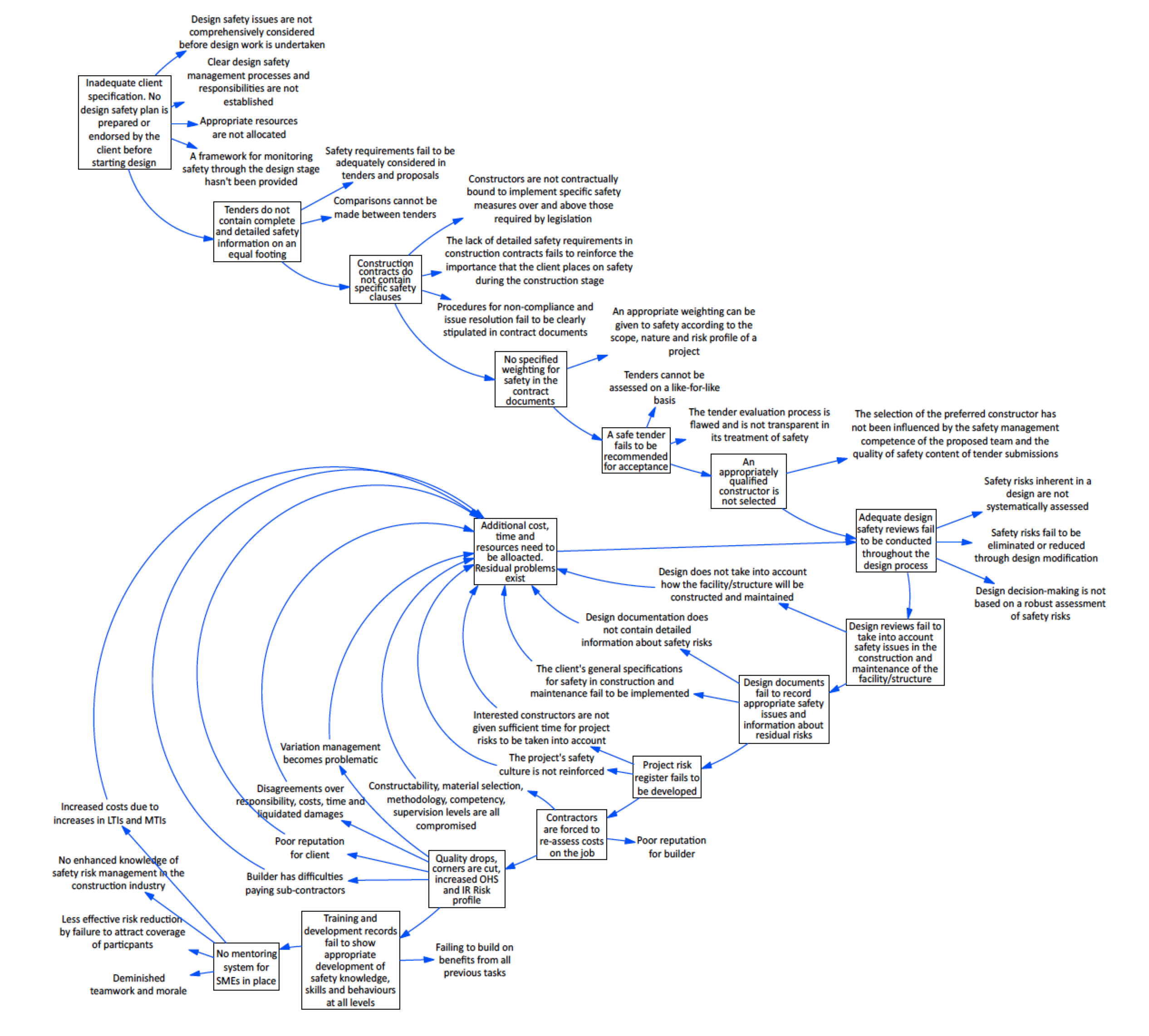 When construction clients demonstrate a commitment to a strong project safety culture, and establish a team responsible for safety leadership from the outset, our analysis shows a significant reduction in costs, time and allocated resourcing for the project. Client Safety Leadership also minimises the residual costs associated with occupancy safety issues once construction is completed.
When construction clients demonstrate a commitment to a strong project safety culture, and establish a team responsible for safety leadership from the outset, our analysis shows a significant reduction in costs, time and allocated resourcing for the project. Client Safety Leadership also minimises the residual costs associated with occupancy safety issues once construction is completed.
Once dedicated teams of safety advocates with a diverse range of skills have been enlisted, procedures should be developed. The team should be authoritative, providing a single, unambiguous contact point for safety matters with clear responsibilities. This can be achieved by the formal appointment of a senior level representative of the client as chairperson.
A public project safety charter should be developed, describing the commitment, the mission and clear safety objectives as they relate to the project and its associated risks. The charter declares the consensus based on a shared understanding of responsibilities for all stakeholders.A project safety master plan must be prepared. The plan is a top level, strategic plan spanning the life of the project that guides the development of subordinate safety plans, such as the Design Safety Plan, Construction Safety Plan and Commissioning Plans.
Safety in design must be instilled as a key project driver. Designers need a clear direction on the client’s preference to build safety into the project design. Building safety requirements into the project brief sends a clear message to designers that safety is to be given equal weighting when evaluating cost, program and functionality. The brief should contain all available data relating to the site that affects safety considerations during design. It should also identify key stakeholders, such as construction, maintenance and cleaning personnel, as well as specifying how designers are to be incorporated into the project safety management framework discussed above.
Key to the success of the implementation is the engagement of design consultants with strongly entrenched safety cultures. Appropriate clauses stipulating requirements for designing for safety should be included in tenders, proposals and contracts. Examples of the suggested requirements are detailed further in the report. Designers should be selected when they are able to demonstrate clear understandings of the legislation, an appreciation of the construction methodology, an understanding and acceptance of the project safety charter and the ability to provide design documentation that facilitates detailed risk analysis and communication of risks to all stakeholders.
Stakeholders should be provided with early notice of their requirement to cooperate and understand their role, relevant to safety in the project. A communication plan and strategy should be developed early in the pre-‐qualification process to ensure all consultants and contractors are given the opportunity to participate, respond and comment on the project charter.
A risk strategy must be documented that considers the most severe risks and guide the feasibility of options i.e. options with unacceptable risks to be eliminated.
The risk analysis should also consider the relationship between the project stakeholders, the public, the eventual users of the facility and the environment. Ranking of risks in accordance with recognised standards such as AS ISO 31000 Risk Management will assist all stakeholders to understand common definitions of consequence and likelihood. This approach streamlines activities for the client to communicate agreed treatment plans or acceptability parameters.
The project risk register must be produced. It is a living central repository and a single source document, which can be used to communicate to project stakeholders, provide a mechanism to record and update risk information and transfer appropriate information to future stakeholders.
Performance indicators must be established. Performance indicators raise the awareness of all people involved in the project, focus designers and constructors attention of safety management and provides a mechanism to monitor performance and continuously develop safety capabilities.
All stakeholders should implement programs to continuously enhance employee knowledge and empower preventative management.
Figure 1. Causal Analysis

Successful, long-‐term relationships with the supply chain should be encouraged. These relationships have the potential for mutual benefit when considering the objective to entrench continuous improvement for safety in design management. The aim is to encourage a supply chain environment where a collegiate approach to safety in design exists and disputes can be resolved as harmoniously and quickly as possible.


